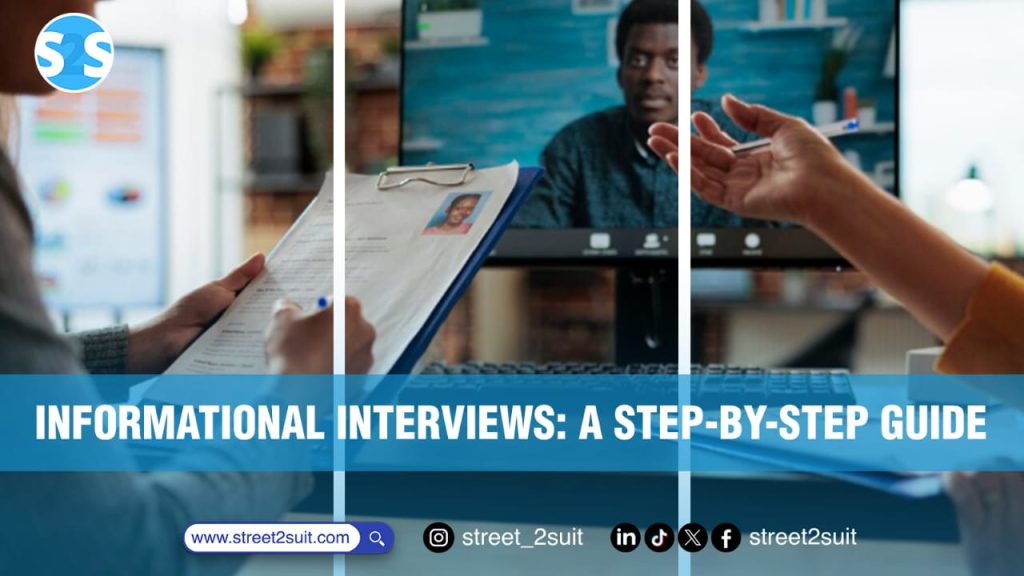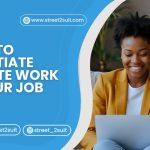We all know the struggle: You scroll through LinkedIn, read job descriptions, and feel like you’re deciphering a riddle in ancient Greek. “Must have 10 years’ experience in AI-powered quantum chicken farming.” Wait—what?
Enter the informational interview: your secret weapon for understanding careers, industries, and life beyond the bullet points on job boards. It’s like getting a backstage pass to someone else’s career—without the pressure of asking, “Are you hiring?”
So, what is it really?
An informational interview is a casual conversation with someone who’s doing what you want to do or think you might want to do. In this chat, you’ll learn from their journey, mistakes, and wisdom—and perhaps get a little guidance, too.
Sounds simple? Yes.
Sounds awkward? Also yes.
But with this step-by-step guide, you’ll transform from a nervous newbie into a networking ninja.
Step 1: Know Your “Why” Before You Say “Hi”
Before reaching out to someone, ask yourself: Why do I want to talk to this person?
Are you:
- Exploring a new career path?
- Planning a job switch?
- Curious about an industry?
- Trying to avoid making the same mistakes they did?
Understanding your purpose keeps the conversation focused and helps you come across as intentional—not random. Think of it as using Google with keywords, not vague ideas.
Step 2: Pick the Right Person.
Look for people who are:
- Working in a role you admire.
- In an industry you’re exploring.
- Alumni from your school or program.
- Friends of friends use LinkedIn as your networking tool.
Pro Tip: start with people who are one or two steps ahead of you. Reaching out to the CEO of Tesla might lead to a blocked connection, but a mid-level professional? Much more approachable—and helpful.
Instead of saying, “I want to work in media,” say, “I’d love to learn more about what it’s like to be a podcast producer at your company.” That’s specific, flattering, and likely to get replies.
Step 3: The Message That Gets a “Yes”
Let’s face it—most people are busy, tired, and suspicious of anything that sounds like a sales pitch. So your message needs to be:
1. Short
2. Polite
3. Respectful of their time
Example:
Subject:Quick Chat? Learning About UX Careers
Hi Aisha,
I came across your profile on LinkedIn and was truly inspired by your journey from graphic design to UX research. I’m currently exploring this path and would love to hear how you made the transition—just a 15–20 minute chat at your convenience.
I’m not looking for a job—just hoping to learn.
Thank you either way, and I appreciate your time!
Best,
Rahmat
Clear. Professional. Zero desperation.
Step 4: Prepare Like You’re Hosting a Podcast, but Less Awkward.
If they say yes and many will!, don’t wing it. Do your homework. Know:
- What the person does
- Where they’ve worked
- Any recent projects or achievements
Then, prepare 5–7 thoughtful questions, such as:
- What does a typical day look like in your role?
- How did you get started in this field?
- What skills are most important in your job?
- What’s something you wish you knew before entering this industry?
- Are there common misconceptions about your job?
- What advice do you have for someone starting out?
Avoid asking, “How much do you earn?” That’s not an informational interview—it’s a financial interrogation.
Step 5: The Interview, It’s a Chat, Not a Cross-Examination
Here’s the big moment. Whether it’s on Zoom, in a coffee shop, or during their lunch break, remember:
- Be on time.
- Be curious.
- Let them talk.
Start with some light small talk. A compliment never hurts:
I really enjoyed your recent article on marketing trends—super insightful!
Then, dive in. Ask your questions. Listen actively. Take notes discreetly—don’t look like you’re live-tweeting the conversation.
When they give advice, don’t argue. This isn’t Twitter.
End with gratitude:
“Thank you so much for your time and honesty. I’ve learned more in 20 minutes than I have in three weeks of Googling.”
Step 6: Follow Up Like a Pro
Send a thank-you email within 24 hours. Keep it simple and sincere. Something like:
Hi Aisha,
Thank you again for sharing your time and experience today—it was incredibly valuable, especially your advice on building a portfolio and finding a mentor.
I truly appreciate your generosity, and I’ll keep you posted on my journey!
Warm regards,
Rahmat
This is how you plant seeds. Many of these contacts may refer you, recommend you, or cheer for you one day.
Step 7: Use What You Learn. Don’t Let It Die in Your Notes App
After the chat, reflect on:
- What surprised you?
- What skills do you need to develop?
- What action will you take?
Then, take action based on the insights you gained. Apply for a course, reach out to someone they recommended, or revise your career plan. Knowledge without action is merely hoarding—and you’re not a dragon guarding a treasure trove of advice.
Why This Works a.k.a. The Secret Sauce
Here’s the truth: informational interviews often lead to opportunities—either directly or indirectly. According to a survey by CareerXroads, over 60% of jobs are filled through networking rather than online applications. Informational interviews are the quieter, more humble cousins of networking, and they are effective.
These interviews don’t begin with, “Can you hire me?” Instead, they start with, “Can you help me understand?”
People appreciate being asked for advice; it’s a compliment that acknowledges their experience.
Conclusion
The Future Belongs to the Curious
Informational interviews are like magic keys: they open doors you didn’t even know existed. They’re free, human, and powerful.
So, instead of submitting your CV to the vast void of the internet, reach out to a real person. Start a conversation, gain clarity, find inspiration, and perhaps even secure an opportunity.
And if it feels scary, that’s perfectly okay. Do it scared.
Because the bold don’t just wait for opportunities—they actively seek direction.
Now, go out there, find someone who is doing what you aspire to do, and ask them the world’s most powerful question:
Can I learn from you?”
Receive the latest job and career updates in your inbox, every week!




